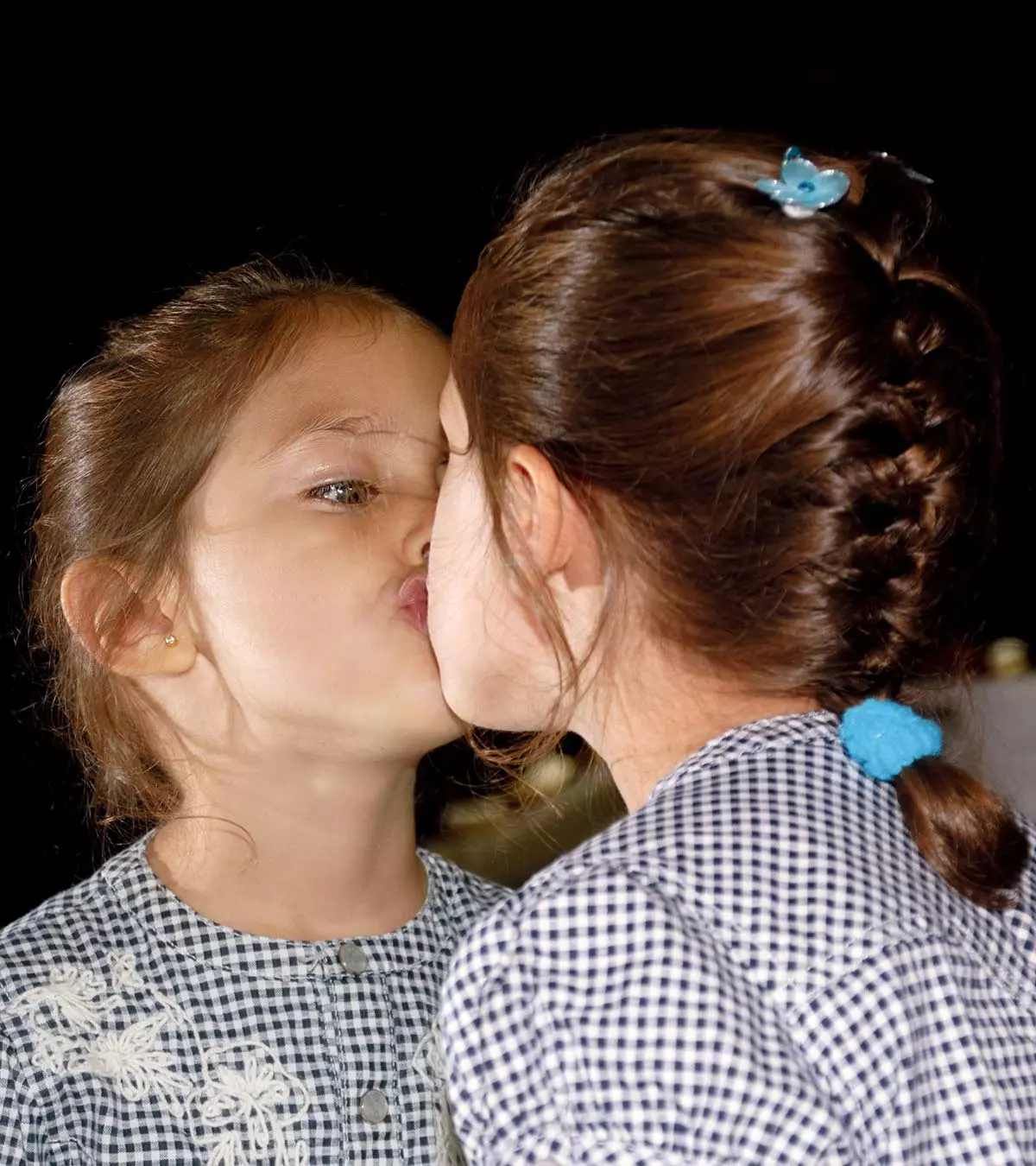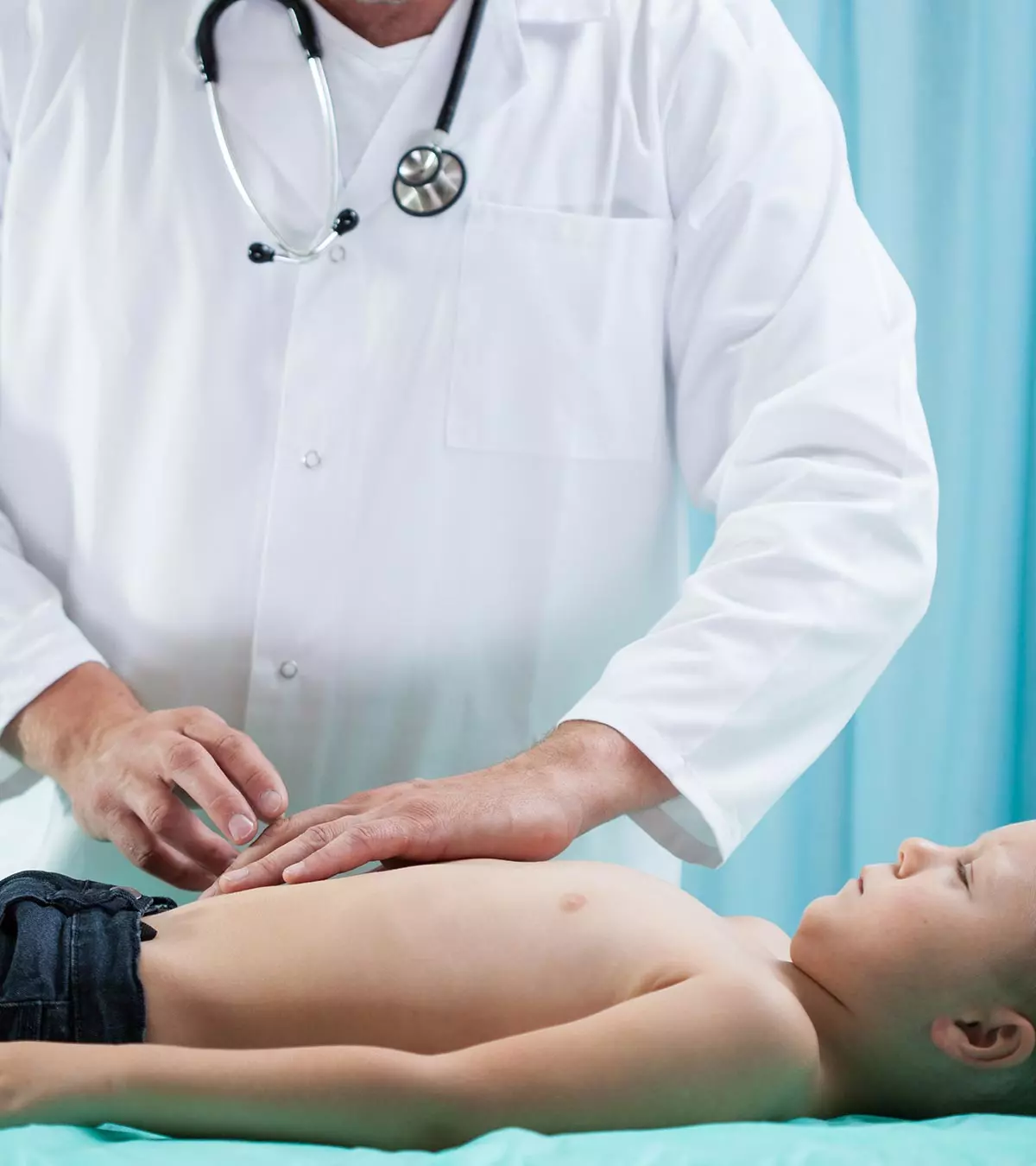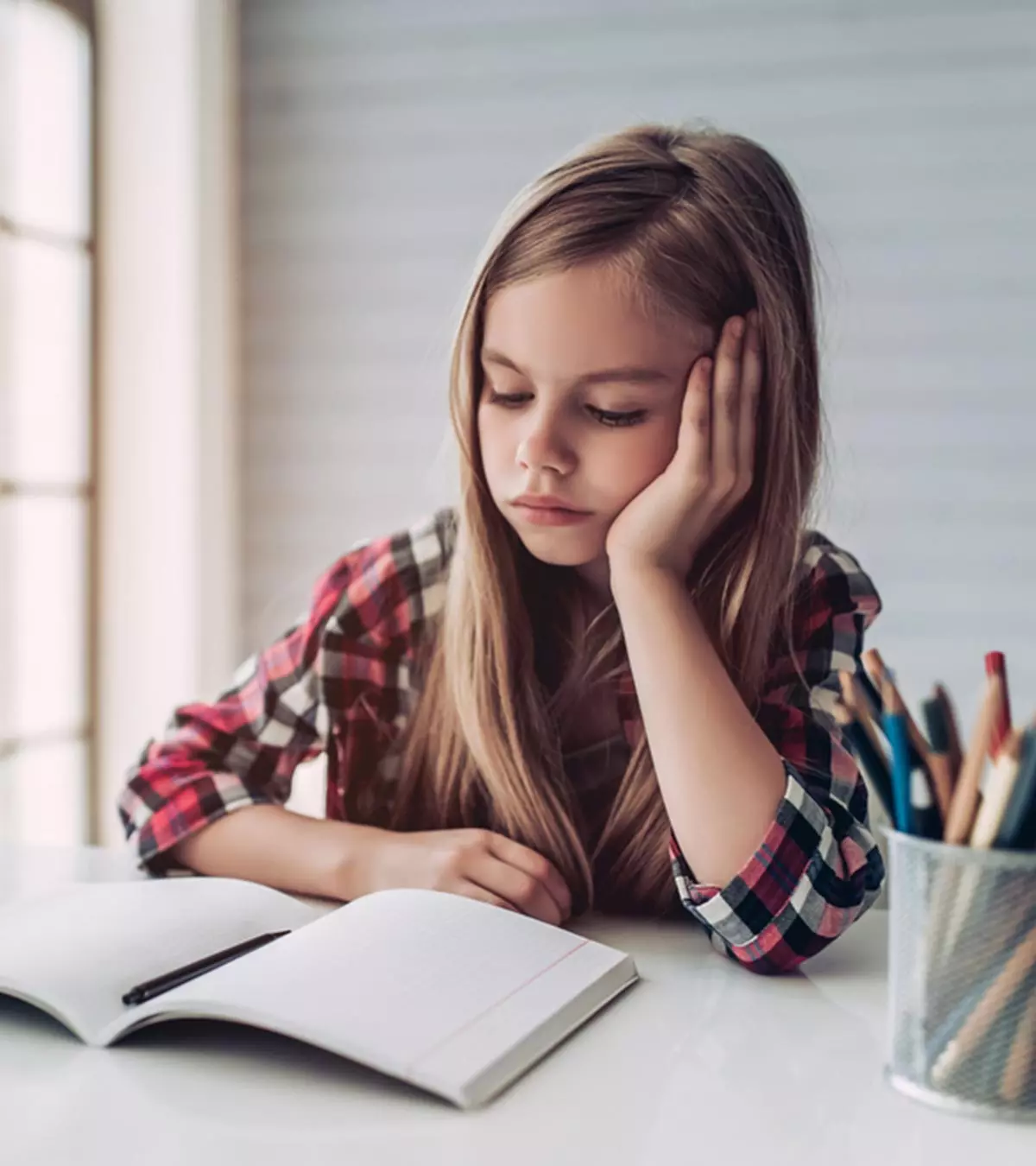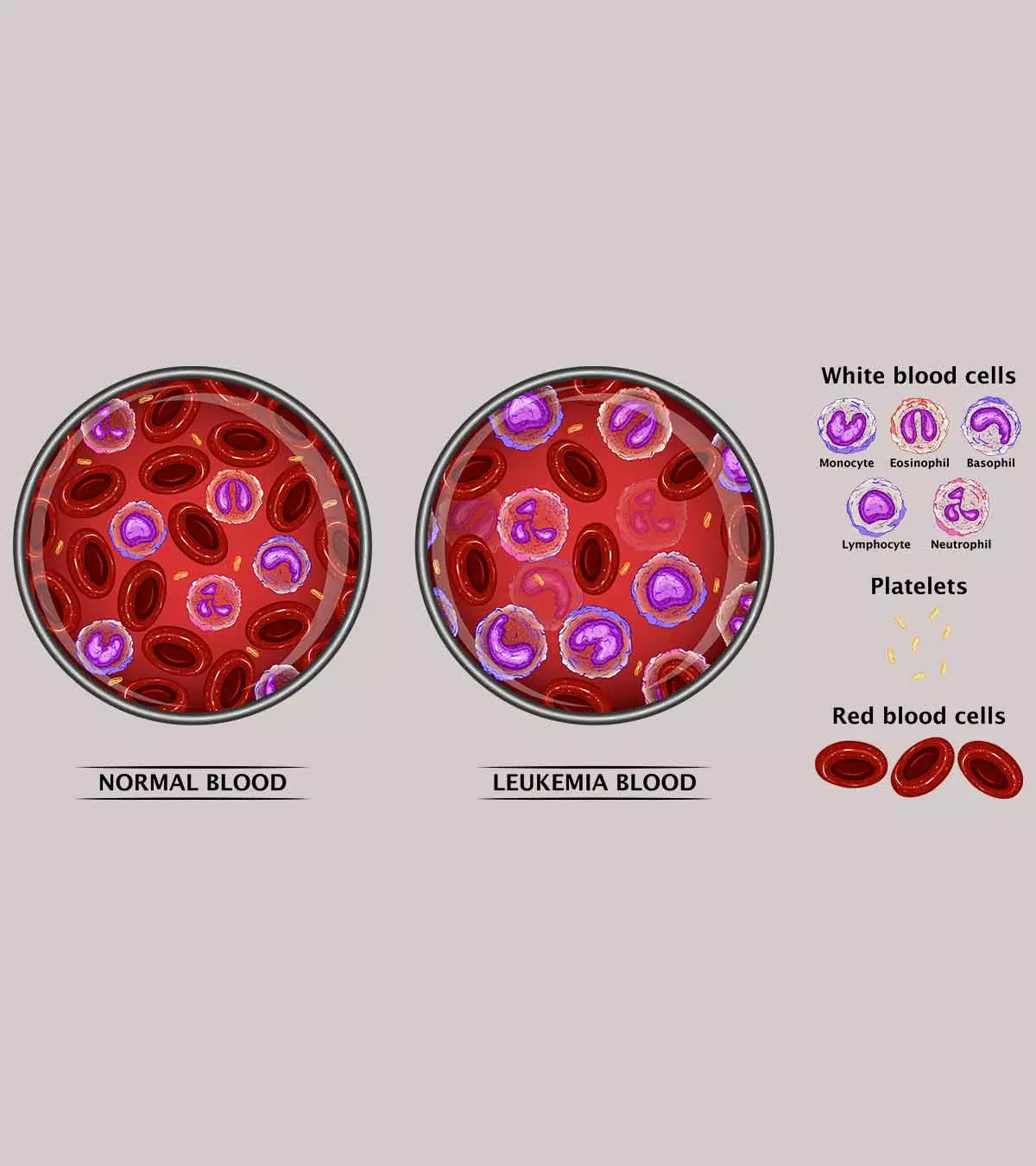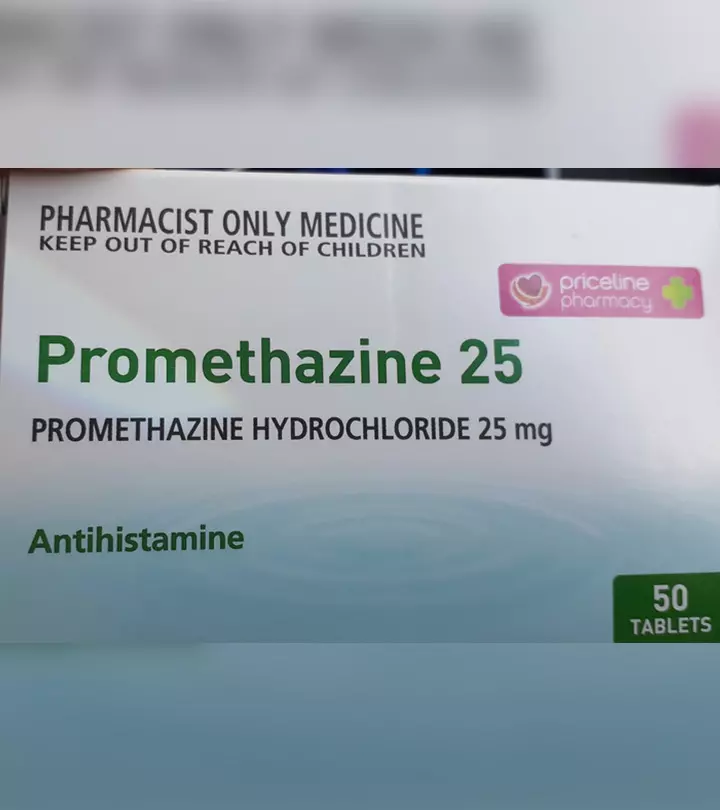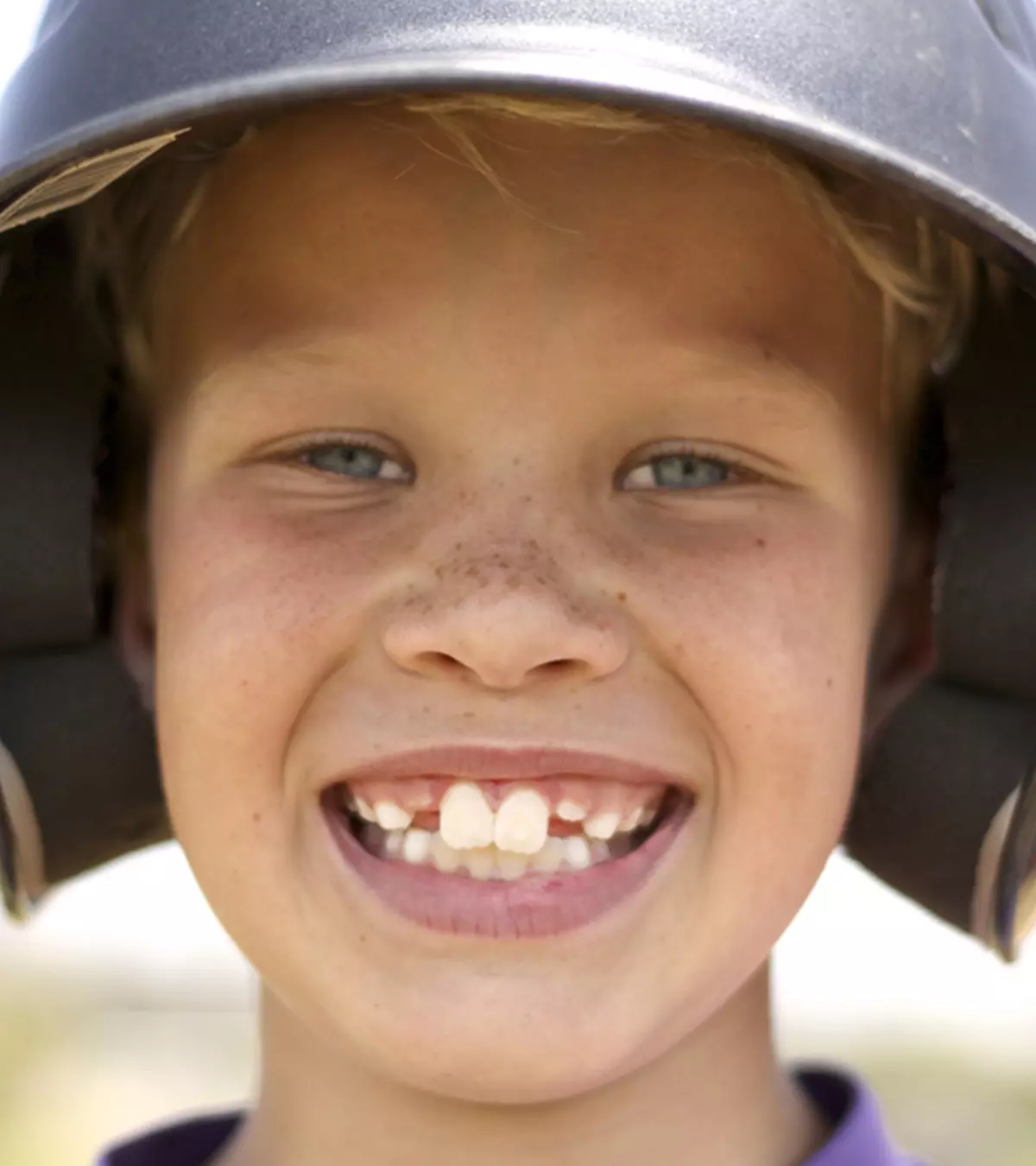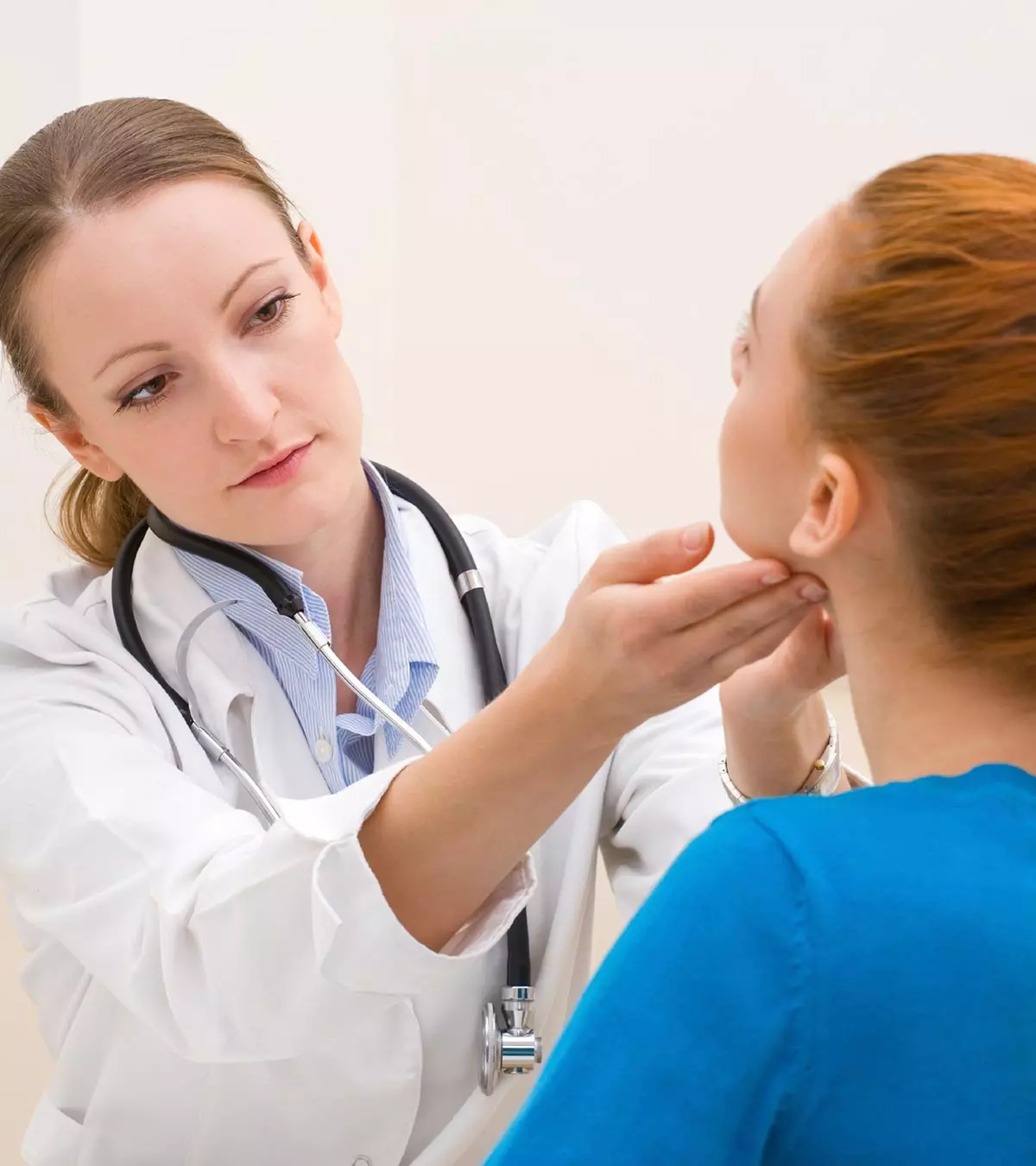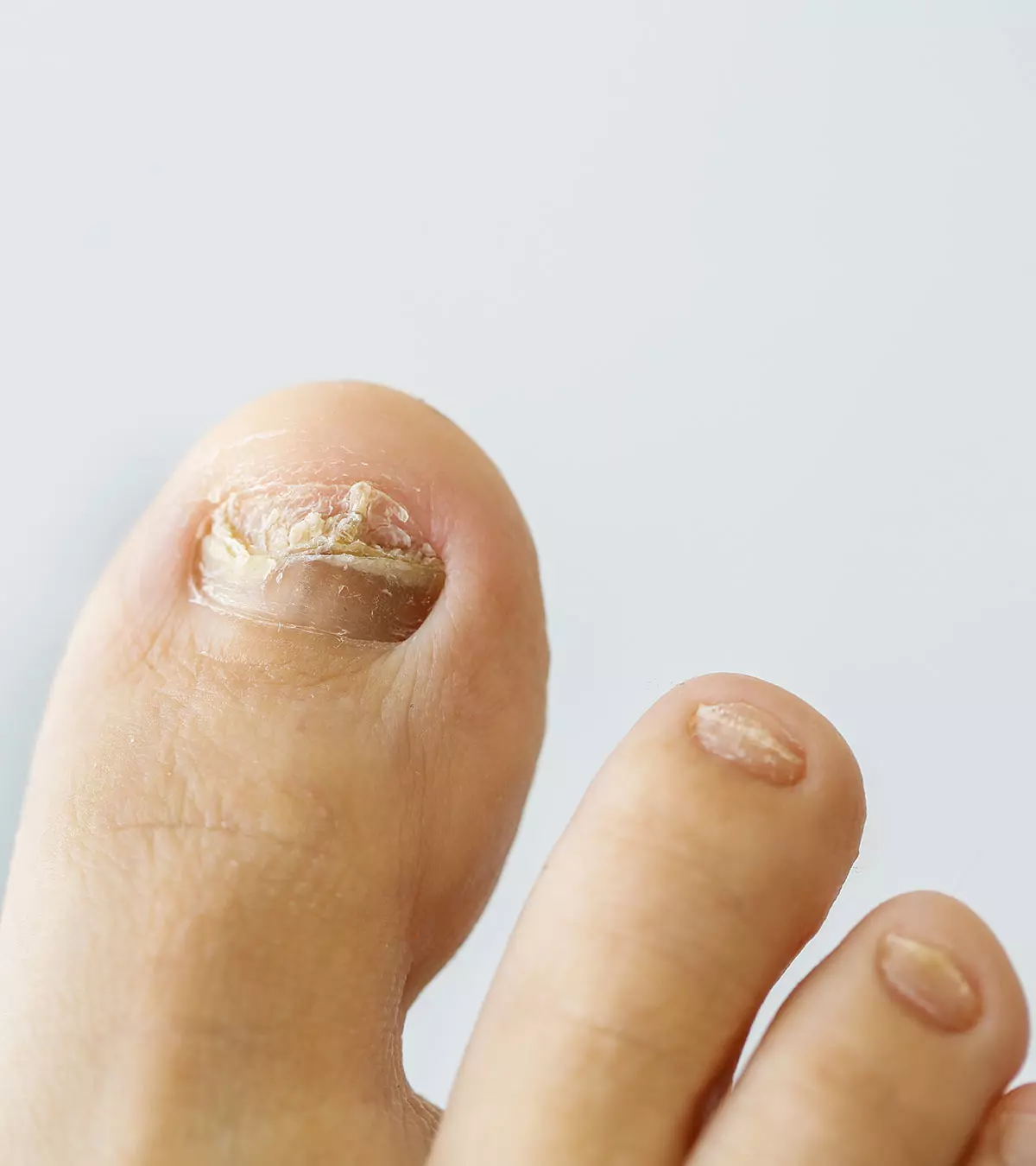
Image: Shutterstock
Nasal polyps in children are rare. According to a study by multiple researchers, the estimated incidence rate of nasal polyps is 0.1 percent among children. These teardrop-shaped, painless, soft polypoidal growths of inflamed tissue may emerge in the nasal lining or the sinuses (1). They can be singular or grow in clusters, called nasal polyposis. If left untreated, nasal polyps may grow and block the nasal passages or sinuses.

Nasal polyps are usually not serious, but a blockage due to polyps can obstruct airflow, make breathing difficult, and lead to sinusitis. If children experience nasal polyps, prompt diagnosis and treatment can help relieve the symptoms with minimal intervention.
Read this post to learn about the causes, symptoms, diagnosis, and treatment of nasal polyposis in children.
Key Pointers
- Nasal polyps can cause nasal obstruction, headaches, and a diminished sense of smell and taste in children.
- Although nasal polyps are uncommon in children, early identification is necessary since they can be benign or malignant.
- An ENT specialist will use a nasal endoscope to detect nasal polyps in children.
- Depending on the child’s symptoms, age, and overall health, nasal drops, sprays, or surgical treatment will be recommended.
Signs And Symptoms Of Nasal Polyps In Children
Nasal polyps are the most common type of nasal mass (abnormal growth in the nose) and may lead to the following symptoms (2) (3).
- Blocked nose
- Runny nose and/or sneezing
- Headaches
- Formation of thick fluid in the nose and throat (catarrh)
- Decreased sense of smell or taste
- Mucus constantly flowing down from the nose to the back of the throat (postnasal drip)
- Nosebleeds
- Snoring
 Be watchful
Be watchful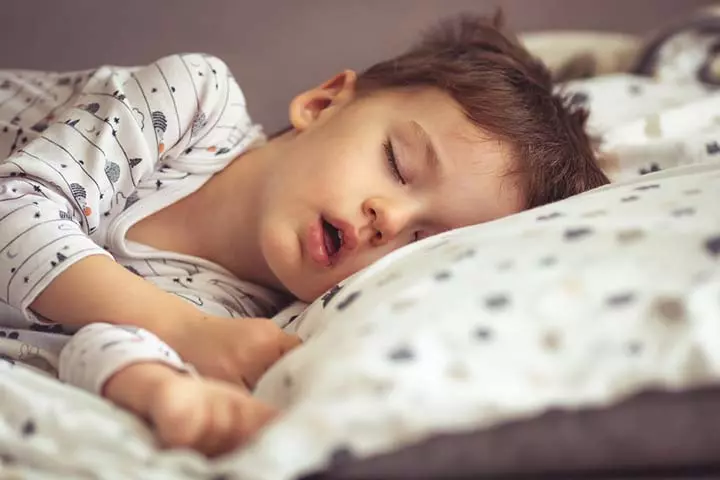
Visit a pediatric ENT specialist promptly if your child has any of these or other cold-like symptoms for more than 14 days.
Possible Causes Of Nasal Polyps In Children
The exact cause of nasal polyp development is unknown. Chronic nose and sinus inflammation due to bacterial infections may often lead to nasal polyps. Experts suggest that nasal polyps are more likely to occur in individuals with (1) (4):
- Asthma
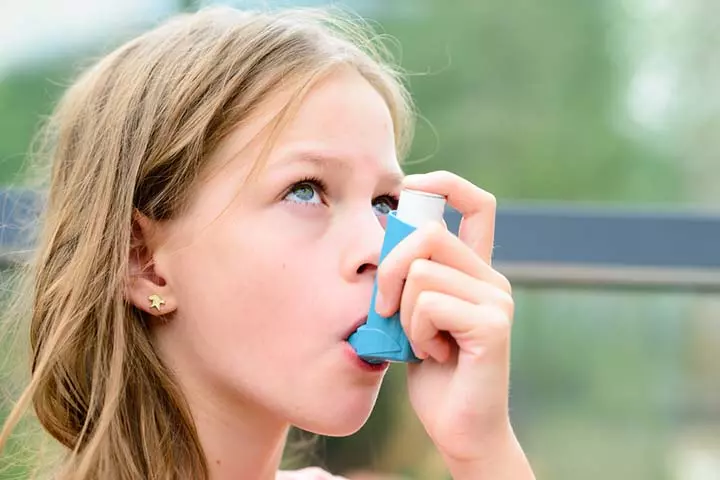
- Cystic fibrosis
According to the NHS, UK, nasal polyps are rare in children (3). However, when they are present, they can be benign or malignant (5). Thus, their timely detection is essential, especially because not all growths in the nose are polyps (1).
Diagnosis Of Nasal Polyps In Children
Noting the child’s symptoms and medical and family history is the first step to diagnosing nasal polyps in children. After that, the doctor will perform a physical examination using a lighted tool with a camera called the nasal endoscope. This instrument will help the doctor see the inside of the nose and sinus cavities on a screen.
If the doctor has any suspicions, they could order additional diagnostic tests, such as a CT scan, MRI, and blood and allergy test. These tests will help the doctor know if any nutritional deficiencies, swelling, or inflammation are causing the polyps. Polyp biopsy is another test that the doctor may order to know if the polyps are cancerous (6).
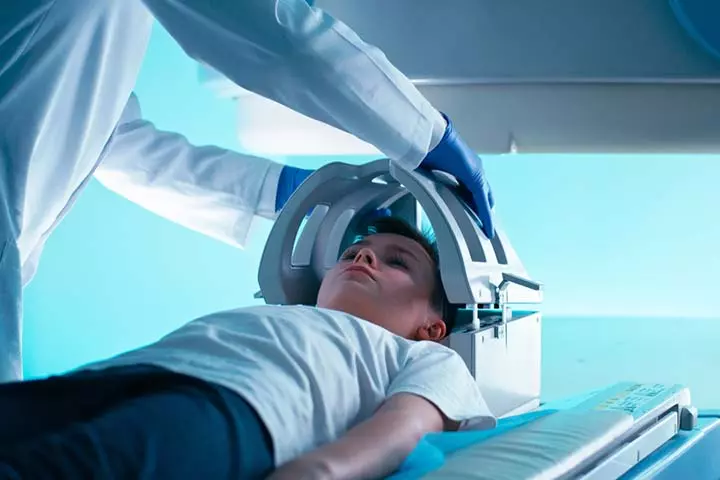
Treatment Of Nasal Polyps In Children
Treatment of nasal polyps in children depends on the child’s symptoms, age, and overall health. Here’s the likely course of treatment for nasal polyps (3) (7).
- Nasal drops and sprays: These medicines help shrink the polyps and prevent them from blocking the airway. The doctor may also prescribe medicines to reduce inflammation. Using a nasal spray for kids can be an effective first step in managing symptoms and providing relief. Some parents also use saline nasal rinses to clear the nose and sinuses. But if nasal sprays and drops don’t work, the doctor may prescribe steroid tablets, usually given for up to two weeks. Antibiotics and antihistamines may also be prescribed if there is a nasal or sinus infection and allergic reaction.
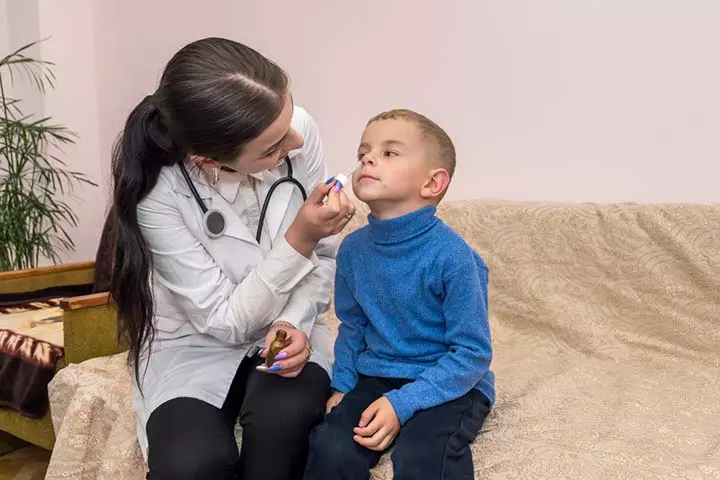
- Surgery: If a child’s symptoms do not improve after a ten-week treatment, an otolaryngology specialist may suggest endoscopic sinus surgery to remove polyps from the nose or sinus. Removal of polyps can offer relief, but they can often regrow after some years. The doctor may advise you to use nasal steroid spray to prevent the polyps from returning quickly.
If a child has a nasal or sinus tumor or has any other complex medical condition, such as cystic fibrosis, the treatment will work on its resolution.
Possible Complications Of Nasal Polyps
The most common complication of nasal polyps is a bacterial infection in the nasal passage or sinuses. These infections can get treated but may come back often and become chronic, such as in chronic sinusitis. In rare cases, the infection can turn severe, increasing the risk of the following conditions (6).
- Meningitis: Infection in the tissues around the brain and spinal cord
- Orbital cellulitis: Infections in the tissues around the eye
- Osteitis: Infections of the sinus bones
If polyps grow too large, they can block the airway and cause brief pauses in breathing, leading to breathing difficulties during sleep (obstructive sleep apnea). In such cases, surgery is the most plausible treatment for relief.
Prevention Of Nasal Polyps In Children
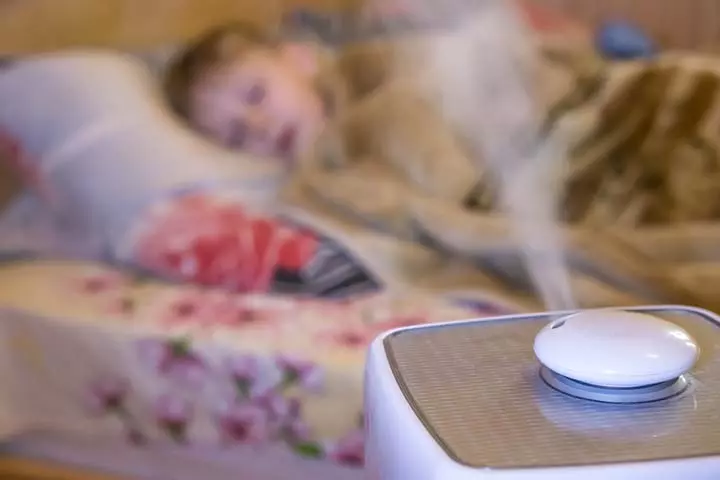
The cause for nasal polyps is unknown. Therefore, prevention may not be possible. Children with treated nasal polyps must follow the prescribed medication course to keep polyp regrowth under check. You may also observe the following practices for the general good health of the upper respiratory passages.
- Practice good nasal hygiene.
- Use cool-mist humidifiers to keep the airways moistened.
- Avoid exposure to airborne allergens or irritants that can irritate the nasal cavity (allergic rhinitis) and cause sinus inflammation, nasal congestion, and allergies.
Frequently Asked Questions
1. Will nasal polyps in children go away on their own?
No, nasal polyps do not go away on their own and need proper treatment. However, small nasal polyps do not cause any problems and can remain untreated, but larger ones should be treated to prevent further complications (8).
2. At what age do nasal polyps develop in children?
Nasal polyps in children commonly develop in the teenage years and may be associated with bronchial asthma (9).
3. What conditions have symptoms similar to nasal polyps?
Some conditions with similar symptoms to nasal polyps include adenoid hypertrophy (enlarged adenoids) and allergic rhinitis. It is important to distinguish nasal polyps from these conditions, as their treatment and prognosis may vary.
Infographic: Signs And Symptoms Of Nasal Polyps In Children
Nasal polyps are abnormal growths in the nose that are relatively uncommon in children. These growths are rarely a cause for concern unless they block the airways or cause discomfort. The infographic below lists the common symptoms of nasal polyps in kids to help you recognize when to seek medical attention and prevent potential complications.
Some thing wrong with infographic shortcode. please verify shortcode syntaxNasal polyps are soft growths, which are usually non-cancerous and cause no health issues. However, if the polyp growth increases and the polyps grow too big, they can obstruct the airways or sinuses and even cause infections. In such cases, prompt treatment is necessary to avoid any discomfort and complications. Your child’s doctor can suggest the best treatment modality based on the child’s symptoms, age, and overall health.
References
- Nasal Polyps.
https://www.health.harvard.edu/a_to_z/nasal-polyps-a-to-z - Nasal polyps.
https://www.entuk.org/patients/conditions/41/nasal_polyps_under_review/ - Nasal polyps.
https://www.nhs.uk/conditions/nasal-polyps/ - Nasal polyps.
https://healthify.nz/health-a-z/n/nasal-polyps/ - V.L. Schramm Jr. and M.Z. Effron Nasal polyps in children.
https://pubmed.ncbi.nlm.nih.gov/7401851/ - Nasal Polyps.
https://www.cedars-sinai.org/health-library/diseases-and-conditions/n/nasal-polyps.html - Sinusitis and Nasal Polyps in Children.
https://www.dukehealth.org/treatments/pediatric-otolaryngology/sinusitis-children - Nasal Polyps.
https://gaapp.org/diseases/type2inflammatorydiseases/nasal-polyps/ - N Segal et al.; (2012); Nasal polyps in the pediatric population.
https://pubmed.ncbi.nlm.nih.gov/23409555/ - Nasal Polyps
https://www.hopkinsmedicine.org/health/conditions-and-diseases/nasal-polyps - Primary Immunodeficiency disorders
https://www.childrenshospital.org/conditions/primary-immunodeficiency#:~:text=is%20primary%20immunodeficiency%3F-Primary%20immunodeficiency%20disorders%20(PIDDs)%20are%20a%20group%20of%20inherited%20conditionsT%20lymphocytes%20or%20B%20lymphocytes. - Pediatric Primary Ciliary Dyskinesia (PCD)
https://www.uncchildrens.org/uncmc/unc-childrens/care-treatment/pulmonary-care/pcd/#:~:text=Primary%20ciliary%20dyskinesia%20is%20arespiratory%20infections%20and%20lung%20damage. - Maria E. Di Cicco et al.; (2025); Nasal Polyps in Children: The Early Origins of a Challenging Adulthood Condition.
https://www.ncbi.nlm.nih.gov/pmc/articles/PMC8620101/#B2-children-08-00997
Community Experiences
Join the conversation and become a part of our nurturing community! Share your stories, experiences, and insights to connect with fellow parents.
Read full bio of Dr. Maria Katrina Florcruz
Read full bio of Swati Patwal
Read full bio of Rohit Garoo
Read full bio of Dr. Joyani Das

 Quick fact
Quick fact





